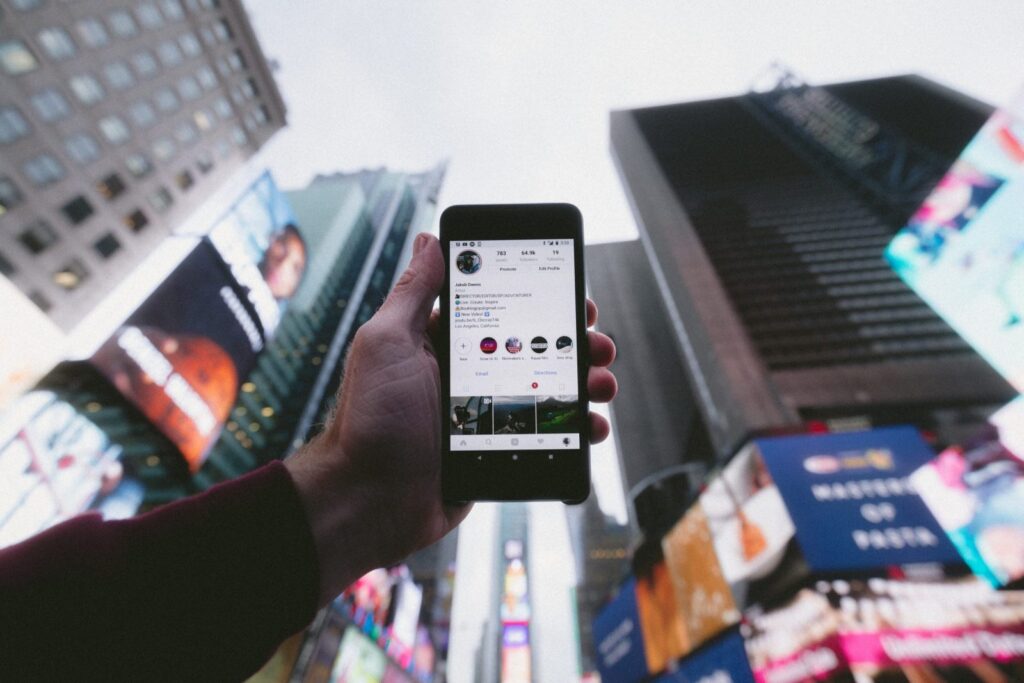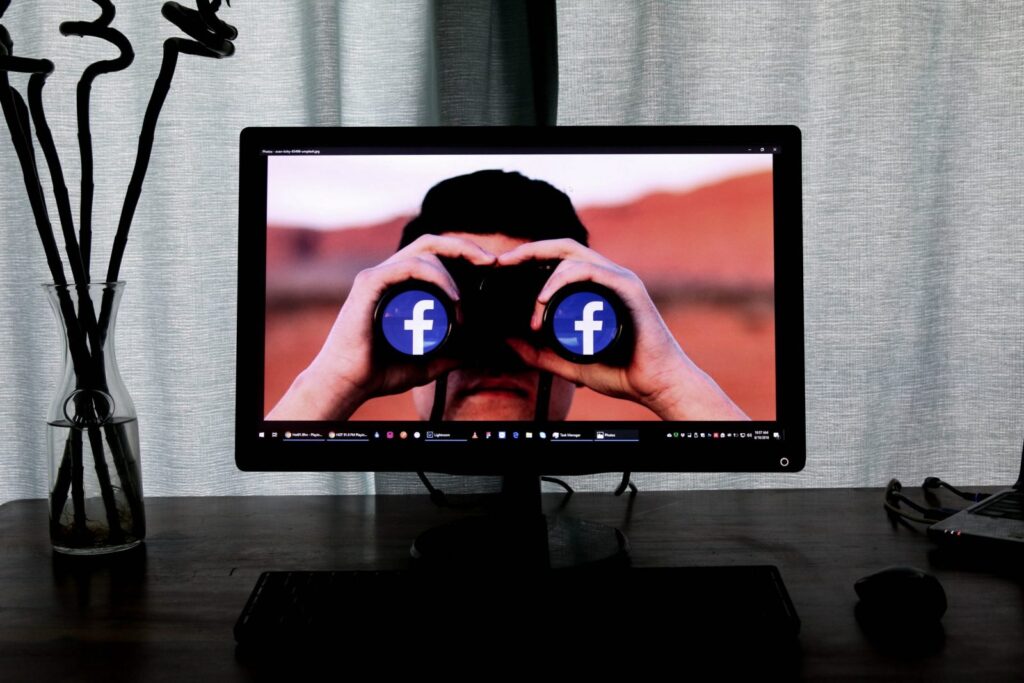Digital Marketing Agency Deep Dive on Instagram’s Recent “Bug”

As a digital marketing agency, we’ve uncovered the details, but now it’s your turn to decide if Instagram’s latest issues were intentional. You don’t have to work for a digital marketing agency to remember the chaos that ensued after Snapchat redesigned its platform. Prominent influencers reacted in horror, slamming Snapchat’s new look and feel. Daily users began departing in droves. Advertisers grew nervous and began to deploy resources elsewhere. And as for Snapchat’s leadership? They played it cool, rolling out the usual party line that accompanies most digital redesigns: Sure, people hate it at first, but they always come around. Except in Snapchat’s case, they didn’t — forcing the company to walk back some of the changes as its user numbers plummeted along with its stock price. Overall, it was a terrible experience for Snapchat, but at least it offered a stellar case study in “what not to do when implementing a redesign” for other platforms. Or did it? What was behind Instagram’s transformational design change? During the last week of 2018, Instagram rolled out a surprise update to its app — one that sparked an outcry highly reminiscent of last year’s Snapchat redesign debacle. This surprise update eliminated the ability for users to scroll vertically and instead introduced a horizontal scrolling system. As you might expect, this rather significant — and entirely out of the blue — change created all sorts of anger and astonishment online. In the immediate wake of the change, the word “Instagram” began trending on Twitter, as celebrities and typical users alike vented outrage about both the new design and the unexpected way it was implemented. It seemed, at least for a moment, that l’affaire Snapchat was back for an encore presentation. And, for those working at a digital marketing agency, it was a turn of events that brought one question to mind: Could one of Snapchat’s primary competitors actually make the same devastating mistake less than a year later? A bug, not a feature In the wake of the outcry over Instagram’s sudden change, the company blamed “a bug” for changing how the feeds of “some users” appeared. Instagram relayed that the problem was fixed and apologized for the issue. Some observers, however, expressed mild skepticism as to whether this update was truly a bug. Adweek pointed out that Instagram’s buggy update could actually introduce interesting new possibilities for digital advertisers. Instead of simply scrolling past ads, users would be required to tap to get out of displayed ads, similar to the way Instagram Stories is set up. This could introduce the possibility for at least one new metric: How fast users tap out of specific ads. Business Insider noted much the same thing, pointing out that horizontal scrolling is more consistent with Stories — a format that Mark Zuckerberg claims will overtake the Facebook News Feed as the primary way people share and consume content. This is expected to occur by mid-2019, according to Facebook projections. The takeaway Was Instagram’s update a bug or a premature rollout? In our estimation, probably a bit of both. Given the advantages of horizontal scrolling, it’s likely Instagram meant to test the update to a small subset of users, then accidentally made the release much wider than intended. Either way, in the wake of last year’s Snapchat-Gate, Instagram needs to proceed very cautiously when considering such changes. At BIGEYE, we believe a digital marketing agency needs to combine world-class creative with exceptional technical capabilities. If your business could benefit from an exciting new approach to marketing, please contact us today.
Why Alexa Skill Programming Allows for Safe Library Use

She can tell you a story, call you an Uber and give you a delicious dinner recipe — and do it all in a British accent if you like. Thanks to Alexa skill programming, there seems to be no limit to what our favorite digital assistant can do. Here’s another one: Alexa can accomplish everything we just listed above while using her “inside voice.” That’s right, Alexa now whispers — and it’s just as weird and fun as you’d expect. Why you never have to worry about Alexa waking the baby again Amazon’s new “whisper mode” for Alexa, which was announced in September, officially went live in October. Now, if you whisper your question or command, Alexa will reply in kind with her own whispered response. While this seems like a smart new feature for parents of young children, or people in busy office settings, the development of whisper mode was prompted largely by another factor: The desire to make Alexa more lifelike. By giving her the ability to whisper back at you, Amazon’s engineers have made her more human sounding and natural, able to respond to conversational cues more intuitively. The result is something to behold. Alexa sounds breathy and more than a bit eerie – but also very natural and human. Whisper mode is not turned on by default, so users will have to ask Alexa to enable whisper mode (simply saying “Alexa, turn on whisper mode” will do the trick). Or, you may also choose to turn on whisper mode by toggling through the app. Alexa: Smarter, faster, better As The Verge mentions, whisper mode is yet one more step in making Alexa more contextually aware by expanding her AI-enhanced capabilities. Alexa uses machine learning to discern sound patterns that are evident in whispered speech, which then triggers a whispered response. This same machine-learning network is used by Alexa to recognize smoke and carbon monoxide alarms. Alexa can also use it to identify the sound of glass being broken, which allows Alexa to serve a home security role. By becoming more contextually aware, Alexa is able to recognize more than just human speech — and therefore play a much larger role in the home. Amazon’s Alexa Brain Initiative is working to refine the voice assistant’s “memory,” so to speak, allowing her to track and recall information across multiple dialogue sessions, something that will make it easier for users to engage with the vast number of third-party Alexa programming skills currently available. Users can also ask Alexa to remember specific information, and then furnish it later. Amazon has also made progress in the effort to make skill launching easier and more user-friendly. Instead of following rigid conversational cues, the goal is to have Alexa activate skills based on natural human language — ultimately becoming so refined that she can recognize a request even if it’s delivered with a stutter, a digression, a long pause — or a whisper. Is your business taking advantage of Alexa Skill Programming? Smart speakers are poised to have a transformational impact on the way we live and do business, much in the same way that mobile devices did a decade before. At BIGEYE, our voice experts specialize in Alexa skill programming — and we’d love to show you how your company can benefit from the right set of skills. Contact our Alexa experts today to take the next step with your brand’s voice and capabilities.
Everything You Need to Know About Facebook’s Rebranded Canvas Ads

For Facebook, 2018 hasn’t been smooth sailing. Unfortunately for the company, the Cambridge Analytical scandal shined an unflattering light on the company’s privacy protocols. While younger users continue to use the platform numbers are definitely lower. A recent hack may have exposed the personal details of 50 million people and the company’s stock price has lagged. Yet — if you’re a practitioner of digital marketing — you have plenty of reasons to remain interested in the Facebook platform. And Canvas ads (or “Instant Experiences”) is one of those reasons. A mobile website experience in miniature Facebook Canvas, which debuted in 2016, represented another step in the company’s attempt to capitalize on mobile, bringing full-screen ads to smartphones. Historically, brands had struggled to weave compelling stories across the small screen, given the technical restraints. This presented a serious challenge when mobile, in a matter of just a few years, became the preferred method for consuming content. Canvas helped square this circle by optimizing ads for mobile, allowing them to load faster and flow properly. Brands could create deeply immersive, full-screen ads geared for mobile that could be opened by clicking on ads inside a news feed. Within a created Canvas, users could swipe through a carousel of images, tilt panoramic shots and zoom at the touch of a button. A Canvas offered a website experience in miniature, with ads claiming full use of all screen space. But what about those recent changes? Facebook recently introduced changes to Canvas, beginning with a new name. The ads are now called “Instant Experiences,” a name that Facebook says has more “zing” and better communicates the overall idea. The use of “instant” makes sense — these ads now load 15 times faster than your average mobile site, thanks to Facebook’s in-house technology. This, of course, is critical in terms of digital marketing. Few people like to wait for their favorite mobile websites to load; nobody wants to wait for ad content to load. In order to facilitate a positive audience experience, the process must be seamless. Instant Experiences now load about 50% faster than a Canvas did in 2016. The process of creating an Instant Experience has undergone some minor changes as well. In order to create an ad, a template is selected, which means that little technical skill is required. Along with faster speeds and a rebranded name, Facebook has also rolled out a new template for Instant Experiences. Currently, these templates include: Instant storefront (for selling products in a grid) Instant customer acquisition (which includes a call to action) Instant lookbook (which displays ad in a lifestyle context) Instant storytelling (which uses video to craft a narrative) Instant form (which allows audiences to quickly share information) All of these templates are available on both the Facebook and Instagram platforms. One more change to note: Brands can now integrate the Facebook Pixel into their Instant Experiences in order to access more detailed data about how Instant Experiences influence buying decisions. The Pixel is automatically added to all Instant Experiences and serves as an easy method for allowing brands to track and follow up with customers. The takeaway Facebook Instant Experiences are an impactful digital marketing tool, particularly for brands seeking to improve their mobile ad offerings. The presence of easy-to-use templates helps to make the process seamless and intuitive for those with limited technical skill. Reach out to our digital marketing team today to assist with navigating the constant FB changes!
DINE Central Florida! BIGEYE’s restaurant infographic

Click the image to enlarge!
The power that lies within the Super Bowl XLIX ads
Ah, the Super Bowl. For football fanatics, it’s the most important day of the year. For others, it’s an excuse to enjoy a few brewksis and some BBQ on a Sunday night; employees and bosses alike can be seen donning sunglasses indoors come Monday morning, free of judgment. Fried chicken wings are a viewing-party staple and high-fives can be heard throughout the sports bar. It’s a great day to be an American. It’s also a great day for advertisers. For one night only, the country, whose viewing behavior typically includes a finger affixed to the remote control, set in fast forward for those notorious “TV time outs” – anxiously tunes-in to a series of commercials, rather than actively ignoring them. [quote]Expectations are high, as the Super Bowl has a history of airing some of the greatest ads of all time. [/quote] Wendy’s “Where’s the Beef?” spot is still admired 30 years later, and no one can forget the Budweiser frogs (even though, I’ve now dated myself, given that the last commercial featuring the trio was in 2000). But with such high viewership comes an even higher price tag attached for precious airtime. NBC’s asking price for Super Bowl XLIX? A cool 4.4 million to 4.5 million per each 30-second spot. That’s some serious pay-for-play. Not surprising, landing a spot isn’t an option for most companies – just ask Newcastle. The brewer’s media budget for the entire year was half of what it would cost to buy a spot during the 2014 Super Bowl, so instead they got crafty and made something even better. Being inventive was a requirement, if the brand were to compete amongst a sea of frothy hops-induced advertising. The company’s campaign, entitled, “If We Made It,” showcased just how outrageously silly, epic, and awesome their ad would be – cleverly playing on the fact that Newcastle could never really afford the ad space to begin with. One of the fan favorites featured a foul-mouthed Anna Kendrick, who was hired to star in the Super Bowl commercial, only to discover Newcastle backed out because they had no money. It was a genius move for Newcastle, using self-deprecating humor and honesty to turn their disadvantage into a successful campaign – one that earned itself AdWeek’s #1 Ad of 2014. In other words, Newcastle Brown Ale managed to air the most memorable Super Bowl ad, without actually making a Super Bowl ad – or paying for one. Cheers, you sneaky geniuses. On the flip side, you’ve likely noticed that many advertisers are now pre-empting the “grand reveal” of their much-ballyhooed debut of epic, witty, and oft-discussed ads – designated specifically for the BIG game, and with BIG budgets – in advance of kick-off. As an advertiser, this is a fairly brilliant strategy to obtain the greatest media mileage for a spot’s hefty purchase price. The conversation gets going early, the buzz begins via social media and marketing industry experts, and viewers immediately know what to look out for when they tune into the game. I have to admit, what is likely a very logical idea from an ROI standpoint sure does feel a little bit like peeking at your holiday gifts in secret before unwrapping them in front of friends and family. What do you think? Which advertisers’ spots do you anticipate will be most-talked about around your office the “day after?” How do you feel about gaining early access to “sneak peeks” at Super Bowl commercials? My guess is, we’ll all have more to discuss than “deflate-gate” with our co-workers come Monday morning. Contact our Orlando marketing agency today, to let us help you create water cooler-worthy creative!